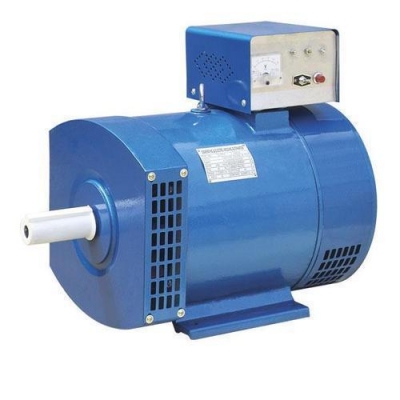How Carries Out A Generator Generate Power?

Alternators are of use appliances which supply electric power in a power outage and prevent discontinuity of daily pursuits or disturbance of business operations. Generators can be found in various electrical and physical settings for use in different applications. In the following sections, we will look at how a generator functions, the key components of a generator, and how a generator functions as a secondary supply of electric power in residential and industrial applications ,more info.
The components of an electrical generator can be broadly classified as follows:
Engine
Alternator 240v
Fuel System
Voltage Regulator
Cooling and Exhaust Systems
Lubrication System
Battery Charger
Control Panel
Main Assembly / Frame
A description of a alternator is given below.
The alternator kva, also referred to as the 'genhead', may be the part of the generator which produces the electrical output from the mechanical input given by the engine. It contains an assembly of static and moving parts encased in a home. The components work together to cause relative movement between the magnetic and electric components, which then generates electricity.
A) Stator -- This really is the static element. It contains a set of electric conductors wrapped in coils within an iron center.
(b) Rotor / / Armature -- This really is the moving element that generates a rotating magnetic field in almost any of the following three ways:
(I) By induction -- These are called brushless alternators and are usually used in large generators.
(ii) By permanent magnets -- This is common in small generator head units.
(iii) By making use of an exciter -- An exciter can be really a little supply of direct current (DC) that energizes the rotor through an assembly of conducting slide rings and brushes.
The Cable creates a moving magnetic field round the stator, which induces a voltage difference between the windings of the stator. This produces the alternating current (AC) output of the generator.
The following are the factors that You Have to keep in mind when analyzing the alternator of a generator:
(a) Metal versus Plastic Housing -- An all-metal style ensures sturdiness of the alternator. Vinyl housings become deformed as time passes and cause the moving regions of the alternator to become vulnerable. This increases wear and tear and more to the point, is toxic to the consumer.
(b) Ball Bearings versus Needle Bearings -- Ball bearings are popular and continue more.
(c) Brushless Design -- An alternator that does not use brushes requires maintenance and also produces cleaner power.
How can a generator work?
A generatoris a tool which converts mechanical energy got from an external source into electrical energy because the output signal.
It is crucial to understand that a generator does not actually 'create' energy. Instead, it utilizes the mechanical energy supplied for it to force the movement of electric charges present in the wire of its windings via an external electric circuit. This flow of electric charges constitutes the output energy supplied by the generator. This mechanism could be realized by considering the generator to function as analogous to a water pump, which causes the flow of water but doesn't actually 'create' the water flowing.
The modern day diesel generator works on the principle of electromagnetic induction discovered by Michael Faraday in 1831-32. Faraday discovered that the above flow of electric charges can possibly be induced by moving a power conductor, such as a wire that contains electric rates, at a magnetic field. This movement produces a voltage difference between the two ends of the wire or electrical conductor, which subsequently causes the electric charges to flow, thus generating electric energy.
